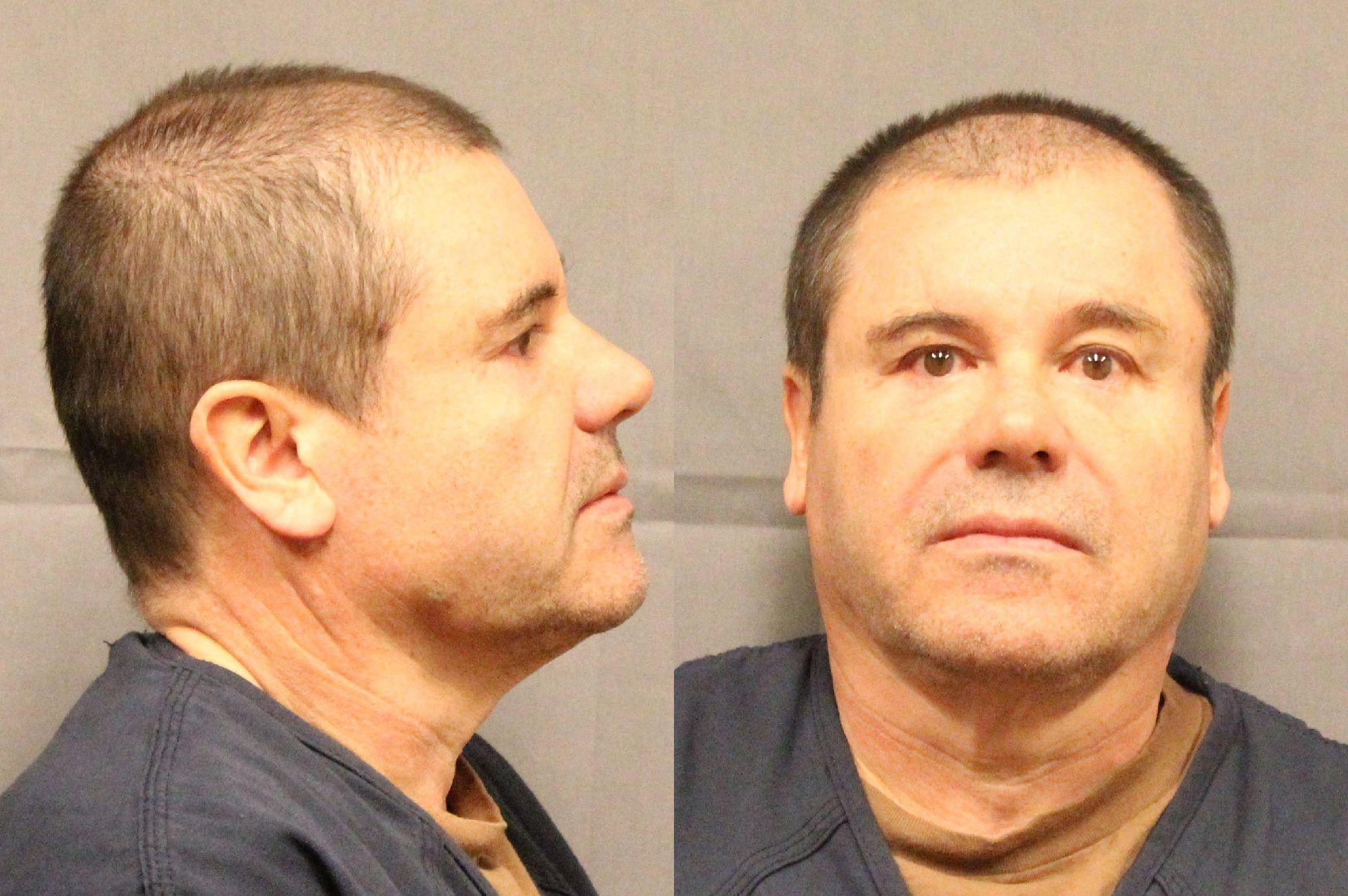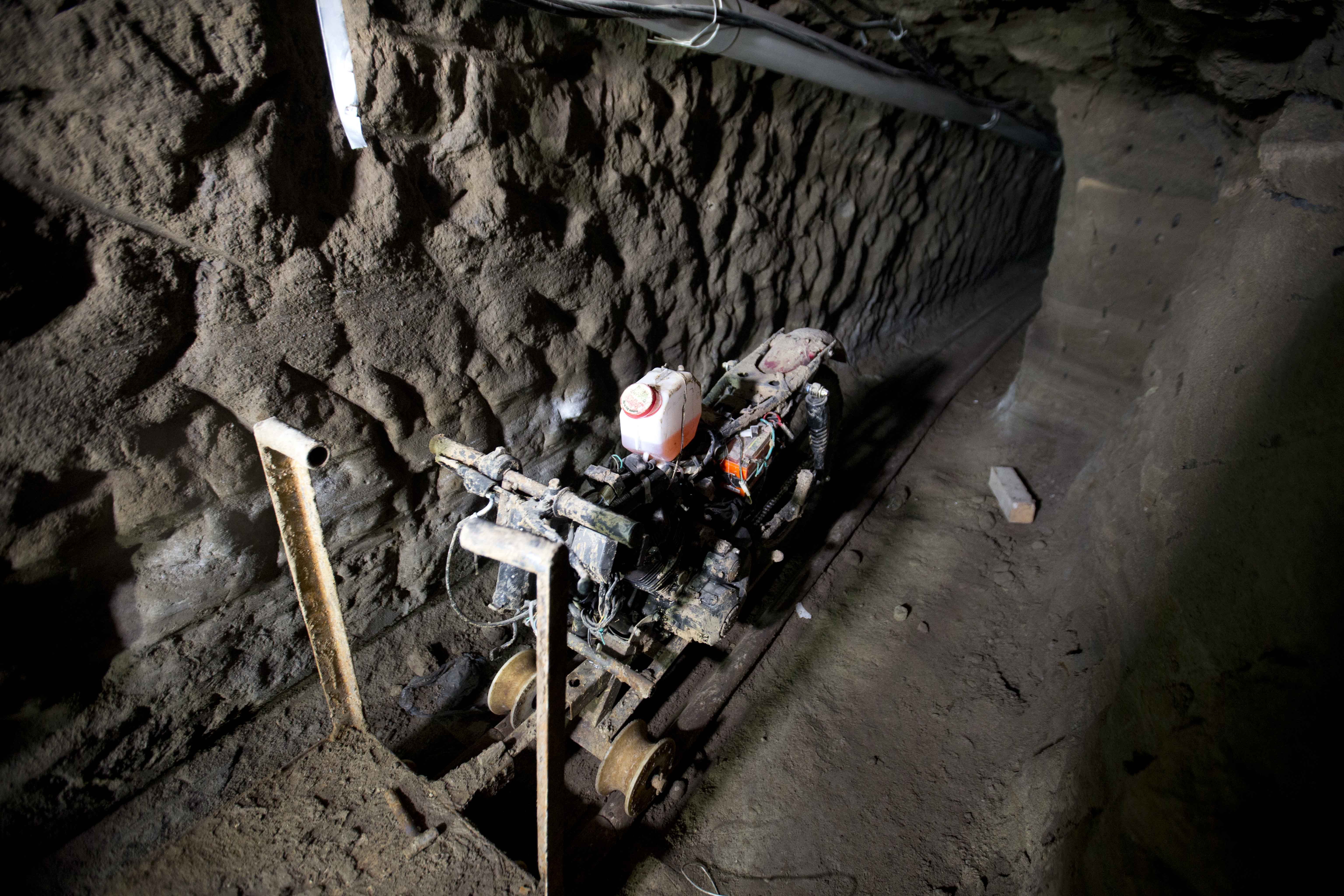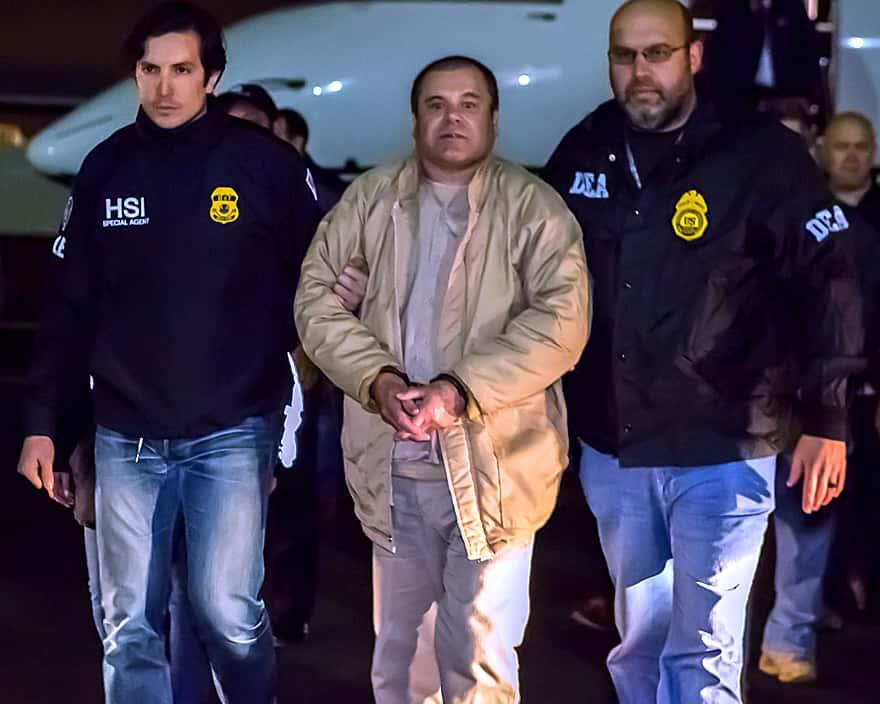Everybody thought El Chapo was safely locked up, until prison guards discovered his empty cell and a tunnel a mile long.
On July 11, 2015, Joaquín 'El Chapo' Guzmán orchestrated a remarkable prison escape from Mexico's highest-security facility, Altiplano, using a sophisticated tunnel system that highlighted his vast influence and the corruption within the penal system. Despite being under 24-hour surveillance, Guzmán exploited a blind spot to access a tunnel that featured ventilation, lighting, and a modified motorcycle for quick transport, leading to a nearby construction site. This audacious escape embarrassed Mexican authorities, who had resisted extraditing him to the United States, and resulted in political fallout, including the dismissal of high-ranking prison officials. El Chapo evaded capture for months, bolstering his image as a legendary outlaw while exposing the extensive reach of the Sinaloa Cartel. He was eventually recaptured in January 2016 after a series of missteps and was extradited to the United States in 2017, illustrating the lengths drug cartels will go to protect their leaders and operations.
Joaquín 'El Chapo' Guzmán executed a daring escape from Altiplano prison on July 11, 2015, by utilizing a tunnel that had been meticulously constructed over several months, underscoring the power and reach of his cartel.
Despite 24-hour surveillance, Guzmán exploited a blind spot in his cell to access the tunnel, which was equipped with ventilation, lighting, and a modified motorcycle on rails, demonstrating the cartel's engineering prowess.
The escape exposed significant corruption within Mexico's penal system, as the operation required inside assistance from prison staff and experts likely hired by the cartel.
El Chapo's disappearance led to a massive manhunt involving both Mexican and US authorities, but his extensive network allowed him to remain hidden for months, showcasing the challenges law enforcement faces against powerful cartels.
His escape damaged the credibility of the Mexican government, leading to the removal and prosecution of several high-ranking officials and resulting in political embarrassment for President Enrique Peña Nieto.
The public perception of Guzmán as a folk hero in parts of Mexico grew due to his ability to outsmart authorities and evade capture, reinforcing his image as a figure beyond the law's reach.
Guzmán was eventually recaptured in January 2016, and by 2017, he was extradited to the United States, where he faced trial, symbolizing the extreme measures cartels employ to protect their leadership and operations.
On the night of July 11, 2015, Joaquín "El Chapo" Guzmán, notorious leader of Mexico's Sinaloa Cartel, pulled off one of the most daring prison escapes in modern history. Held in Mexico’s highest-security prison, El Chapo vanished from his cell through a meticulously constructed tunnel. The escape embarrassed Mexican authorities, highlighting the extent of Guzmán's power, wealth, and influence.
A Prison Built To Be Impenetrable
Altiplano prison was considered escape-proof, housing Mexico’s most dangerous criminals. El Chapo was under 24-hour surveillance, with a camera pointed directly at him. Despite these precautions, the drug lord exploited a blind spot near his cell's shower area—setting the stage for his escape beneath the watchful eyes of the guards.
 DEA, Wikimedia Commons
DEA, Wikimedia Commons
The Sophistication Of The Tunnel
The tunnel that facilitated his escape was a staggering feat of engineering. Stretching over a mile long, it featured ventilation, lighting, and even a modified motorcycle mounted on rails to transport tools and speed up Guzmán’s getaway. The tunnel led from the floor of his cell to a construction site in a nearby neighborhood.
Months Of Planning And Corruption
Such an elaborate operation required months of preparation and inside assistance. The project likely involved cartel-employed engineers, mining experts, and corrupt prison staff. The escape underscored the deep-rooted corruption within Mexico’s penal system, where bribes and intimidation often rendered security measures meaningless.
Vanishing Without A Trace
Once El Chapo emerged from the tunnel, he disappeared into the night in a waiting getaway vehicle. By the time authorities discovered the hole in his cell, Guzmán was long gone. The escape humiliated the Mexican government, which had previously resisted extraditing him to the United States, insisting their prisons could contain him.
 Eduardo Verdugo, Wikimedia Commons
Eduardo Verdugo, Wikimedia Commons
The Global Manhunt Begins
Mexican authorities launched a massive manhunt, working alongside US agencies. Checkpoints, raids, and rewards were issued, but Guzmán’s extensive network allowed him to remain hidden for months. His ability to evade capture underscored the cartel’s reach and the uphill battle law enforcement faced.
Public Reaction And The "Robin Hood" Myth
El Chapo’s escape captivated the public, fueling his image as a legendary outlaw. In parts of Mexico, where the cartel provided jobs and resources, some viewed him as a folk hero. His ability to outsmart authorities reinforced the perception of Guzmán as a figure beyond the law’s grasp.
Political Fallout And Resignations
The escape triggered political fallout in Mexico. High-ranking officials within the prison system were dismissed or charged for suspected complicity. The incident damaged President Enrique Peña Nieto’s credibility, especially after previously boasting that another escape would be "unforgivable."
 Wikimedia Commons
Wikimedia Commons
Recapture And Final Extradition
El Chapo was finally recaptured in January 2016 after a shootout in Los Mochis, Sinaloa. His desire to film a biopic and communicate with actress Kate del Castillo had exposed his location. This time, Mexican authorities wasted no time—by 2017, Guzmán was extradited to the United States to face trial.
A Symbol Of Cartel Power
El Chapo’s escape became symbolic of the vast resources and ingenuity of modern drug cartels. It demonstrated how the cartels could undermine state institutions through a mix of corruption, technology, and fear—posing challenges far beyond simple law enforcement.
The Escape That Redefined Notoriety
El Chapo’s 2015 tunnel escape was a bold display of defiance against the Mexican government, and cemented Guzmán’s status as one of the most notorious criminals in history. Now serving a life sentence in US federal prison, his escape showed the lengths cartels will go to protect their leaders and operations.
You May Also Like:
Untouchable Facts About Eliot Ness, The Gangsters’ Sworn Enemy
24 Chilling Facts About America’s Most Wanted
What Is Racketeering? A Surprisingly Complex Crime
Sources: 1, 2, 3